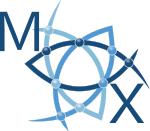Research Summary
My research focuses on the development and application of computational methods to discover and design novel energy materials, and study their properties, in a multidisciplinary field where physics, chemistry, materials science and computer science intersect.
Method development
I have developed several methods for atomistic simulations, mainly on structure prediction techniques based on the minima hopping method as implemented in the Minhocao package. Furthermore, I have been involved in the development of structural fingerprints and transition state search methods to explore the energy landscape of chemical systems. I have also contributed to the BigDFT density functional theory package and the Alborz atomistic simulation toolkit for neural network potentials as a developer. Currently, I am working on developing a fully integrated library for atomistic simulation environments (FLAME), which will be released as an open source package for public use.
Applications
I have been applying my own methods together with state-of-the art algorithms to study and understand condensed matter at various conditions. The tools that I use include, but are not limited to, structural search, data mining, high-throughput, lattice dynamics calculations, and machine learning, mostly in conjunction with density functional theory or other methods for atomistic modeling. The focus of my research lies in studying low-dimensional systems such as nano-particles, surface adsorption mechanisms, surface reconstructions, and 2-dimensional materials, but also in investigating properties of bulk crystalline materials including superconductivity, hydrogen storage materials, materials at high pressures, thermoelectric materials, materials for photovoltaic applications and transparent conducting oxides.
Research focus: High-pressure materials chemistry, methods for materials prediction, superconductivity, and thermoelectric materials
